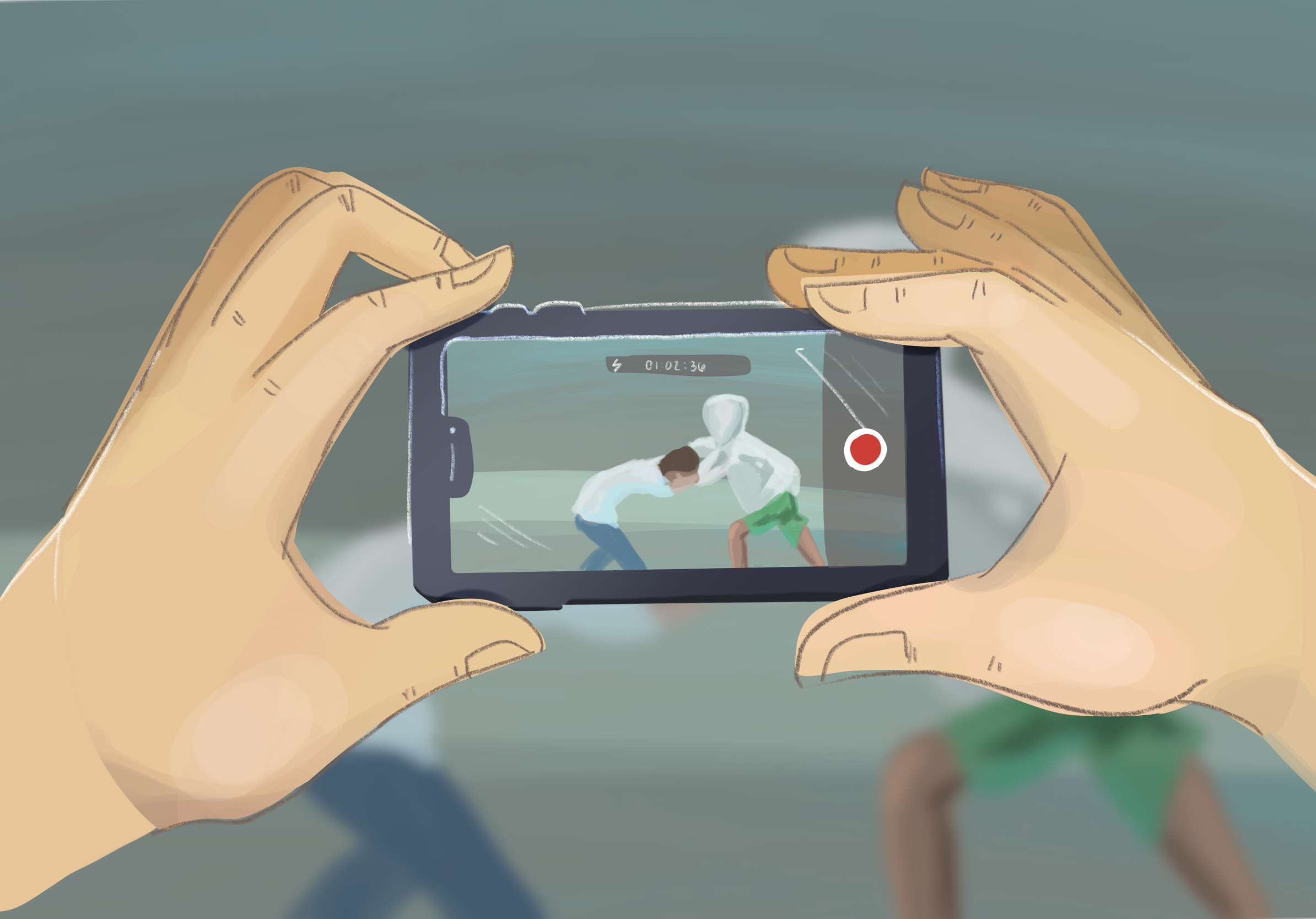
While on your way to Classroom South, an argument breaks out right in front of you between two people. The argument then escalates into a fistfight, and you continue to stand there and observe. At that moment, you were a bystander.
A bystander is a person who is present at an event or incident but does not take part.. Being a bystander can often lead to something called the bystander effect, which occurs when no one witnessing an event does anything to help because they see that others aren’t helping or assume in their head that those people have already helped. Seeing others not doing anything discourages them from doing something.
Being a bystander in the past is completely different from being a bystander today. In today’s digital age, we have a different type of a bystander called a digital bystander. A digital bystander follows the same concept except they’re witnessing the event through technology like a live stream or they’re witnessing the event in person and instead of intervening or calling for the police, they’re recording the event.
A modern-day example of digital bystanders would be the violent removal of a passenger from a United Airlines flight. On April 9, 2017, a United Airlines flight was overbooked, so they decided to randomly select people to be removed from the flight. When one man was selected, he refused to get up. In response, three security officers came on board the plane and physically removed the man out of his seat, and in the process, they slammed his face against an armrest.
As this event transpired, the other passengers on the plane were just sitting there in silence, emphasis on sitting. No one got up to help the man. You could hear one lady screaming, “What are you doing?” but besides that, the passengers’ immediate response to the situation, like many others in our society would be, was not to intervene but to record.
When someone records an event and posts it to social media, they think they’re doing more good than harm. We are so consumed with our phones and technology in general that it allows for the digital bystander effect to arise.
Keshia Naurana Badalge, a contributor for Quartz, wrote that our camera phones may make us “feel like social-media activists, but when we’re recording an event instead of intervening, we’re actually just real-world bystanders. There is a gulf of dissonance between what we publicly declare as our values—online or otherwise—and how we act.”
As a community, students and young people in particular, we need to do better when it comes to being digital bystanders. It’s selfish and somewhat disturbing that our first response to a violent scenario is pulling out our phones to record or standing by watching instead of helping or using the phone for good like calling 911. There are always going to be events that we might deem worthy of a Snapchat post, but we need to take a step back and reassess our initial course of action.
